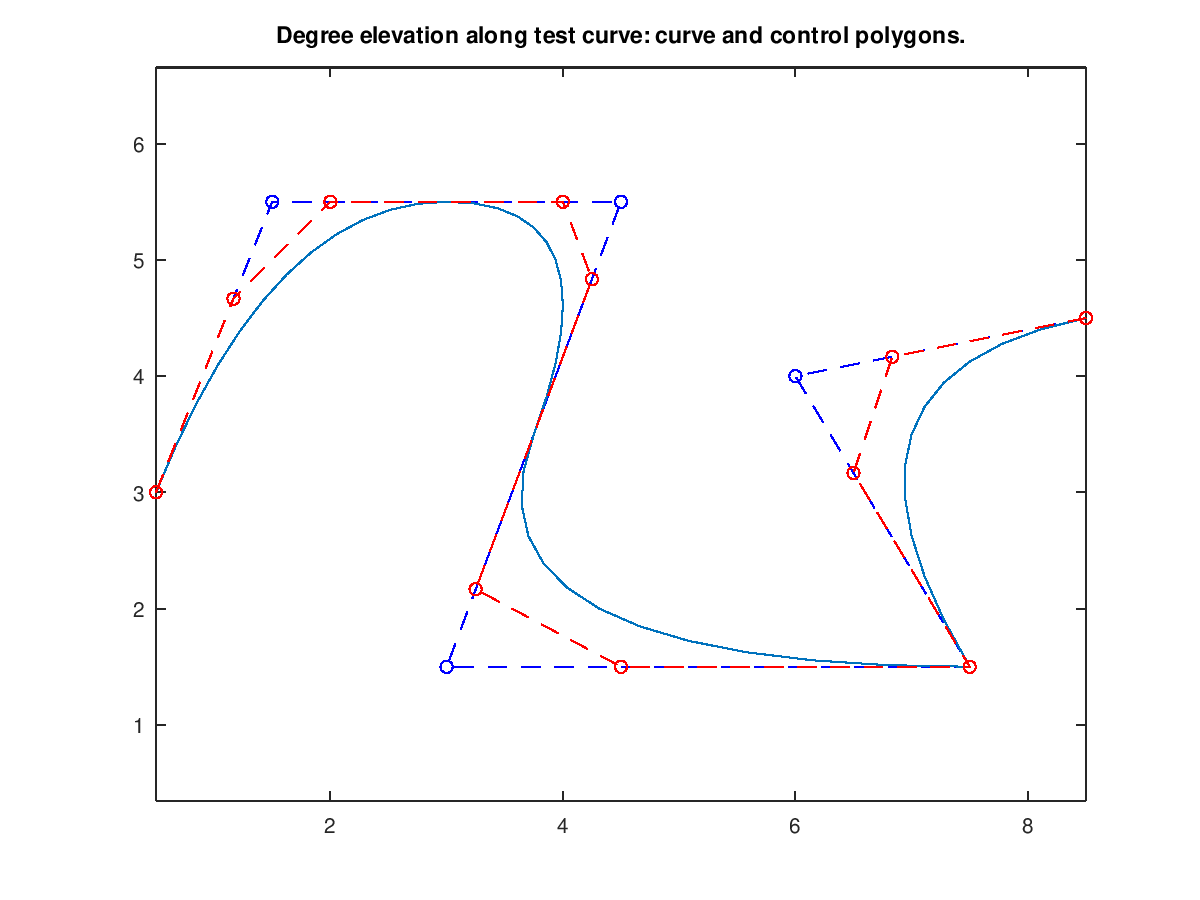NRBDEGELEV: Elevate the degree of the NURBS curve, surface or volume.
Calling Sequence:
ecrv = nrbdegelev(crv,utimes);
esrf = nrbdegelev(srf,[utimes,vtimes]);
evol = nrbdegelev(vol,[utimes,vtimes,wtimes]);
INPUT:
crv : NURBS curve, see nrbmak.
srf : NURBS surface, see nrbmak.
vol : NURBS volume, see nrbmak.
utimes : Increase the degree along U direction utimes.
vtimes : Increase the degree along V direction vtimes.
wtimes : Increase the degree along W direction vtimes.
OUTPUT:
ecrv : new NURBS structure for a curve with degree elevated.
esrf : new NURBS structure for a surface with degree elevated.
evol : new NURBS structure for a volume with degree elevated.
Description:
Degree elevates the NURBS curve or surface. This function uses the
B-Spline function bspdegelev, which interface to an internal 'C'
routine.
Examples:
Increase the NURBS surface twice along the V direction.
esrf = nrbdegelev(srf, [0, 2]);
See also:
bspdegelev
Copyright (C) 2000 Mark Spink, 2010 Rafel Vazquez
This program is free software: you can redistribute it and/or modify
it under the terms of the GNU General Public License as published by
the Free Software Foundation, either version 3 of the License, or
(at your option) any later version.
Demonstration 1
The following code
crv = nrbtestcrv;
plot(crv.coefs(1,:),crv.coefs(2,:),'bo')
title('Degree elevation along test curve: curve and control polygons.');
hold on;
plot(crv.coefs(1,:),crv.coefs(2,:),'b--');
nrbplot(crv,48);
icrv = nrbdegelev(crv, 1);
plot(icrv.coefs(1,:),icrv.coefs(2,:),'ro')
plot(icrv.coefs(1,:),icrv.coefs(2,:),'r--');
hold off;
Produces the following figure
| Figure 1 |
|---|
 |
Package: nurbs